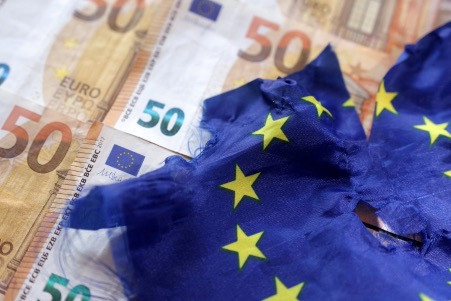Europe is facing a serious energy and financial crisis, which, when coupled together is referred to as the “double energy crisis”. Recent economic data has shown fears of an economic slowdown. An alarming example of this is the European business activity slowing down during August, to its lowest level, since November 2020. Russia’s full-scale invasion of Ukraine sparked serious fears in Europe that the region would enter a significant slowdown.
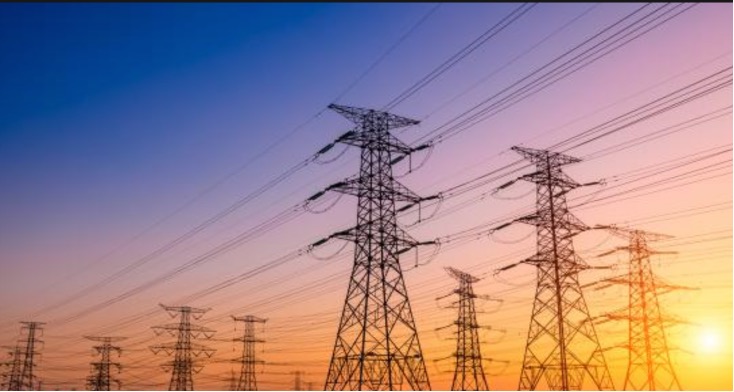
Energy Crisis
The European Union’s natural gas demand plummeted by 13%, in 2022, its biggest decline ever, as a result of Russia’s invasion of Ukraine and an increase in energy costs. The decrease is equal to the quantity of gas required to power more than 40 million homes.
The cost of gas, which is primarily imported, directly affects the wholesale price of power on the EU’s internal market. The recent surge in gas prices in the EU, which has affected the cost of electricity generated by gas-fired power plants and altered electricity costs generally, is mostly the result of Russia’s purposeful limitation of gas supplies. As it takes time to replace Russian gas supplies with supplies from EU sources, the cost of energy is anticipated to remain high in the EU in the upcoming months.
A few other factors that drove this fall in demand were changes in energy mix, economic activity, weather, and behavioral changes.
Milder winter temperatures certainly played a role. The low rainfall in southern Europe caused a particularly bad year for hydropower, which raised the demand for gas-fired power, therefore not all weather-related factors reduced gas use.
High prices also played a considerable role in bringing down demand, especially in gas-intensive industrial sectors.
Policy actions, including programs to boost renewable energy, incentives and favorable loans for home renovations and heat pump installations, as well as efforts to promote behavioural change, all contributed to reducing the demand for gas.
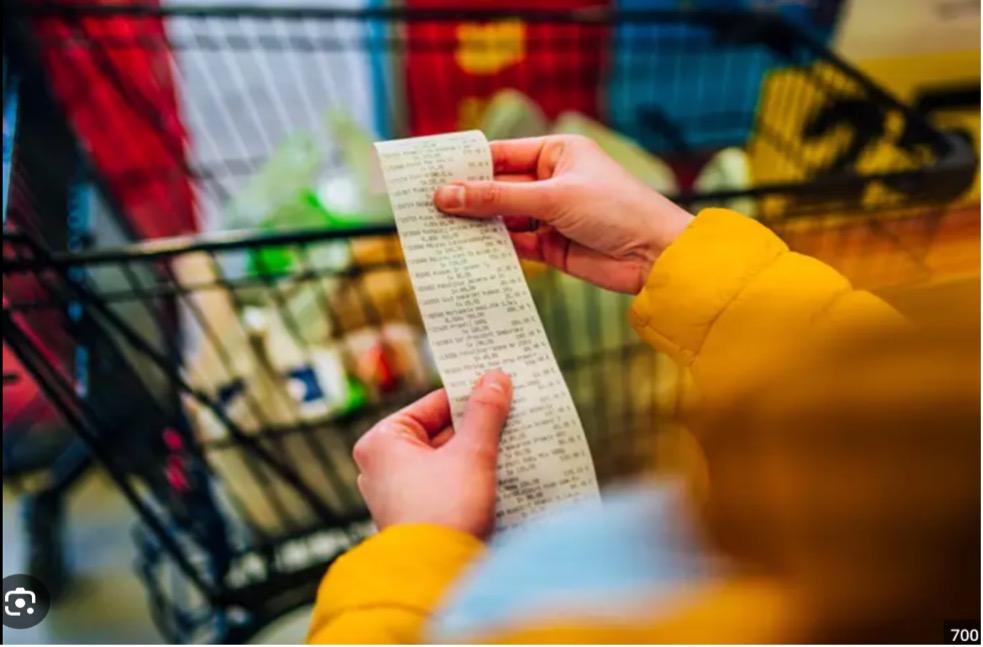
Financial Crisis
At the beginning of the year, the eurozone shrank by 0.1 percent for the second straight quarter, entering a technical recession.
Since beginning an extraordinary campaign of monetary tightening in July of last year, the European Central Bank has responded by raising its key rates by 3.75 percentage points.
Despite recent drops in petrol and oil prices, the price spike last year had a significant impact on household confidence and prompted a drop in consumption.
At the beginning of the year, the UK managed to avoid going into a recession, and the US’s growth rate likewise held steady. Contrary to the UK, where the economy is still 0.5% less, GDP volumes in the eurozone and the EU are more than 2% higher than the level observed in the final quarter of 2019 prior to the Covid epidemic. After the Russian invasion of Ukraine led to a dramatic increase in petrol prices and the greatest rates of inflation since the single-currency bloc’s founding, households throughout the eurozone are feeling the squeeze of growing living costs.
With a 6.5% rate in April, unemployment is at its lowest point since before the euro was created in 1999.
According to figures from Eurostat, annual inflation in EU nations averaged 9.2% in 2022 as a result of Russia’s actions in Ukraine, which significantly hurt commodity markets. The Baltic states had the highest rates, with Estonia recording a startling 19.4%.
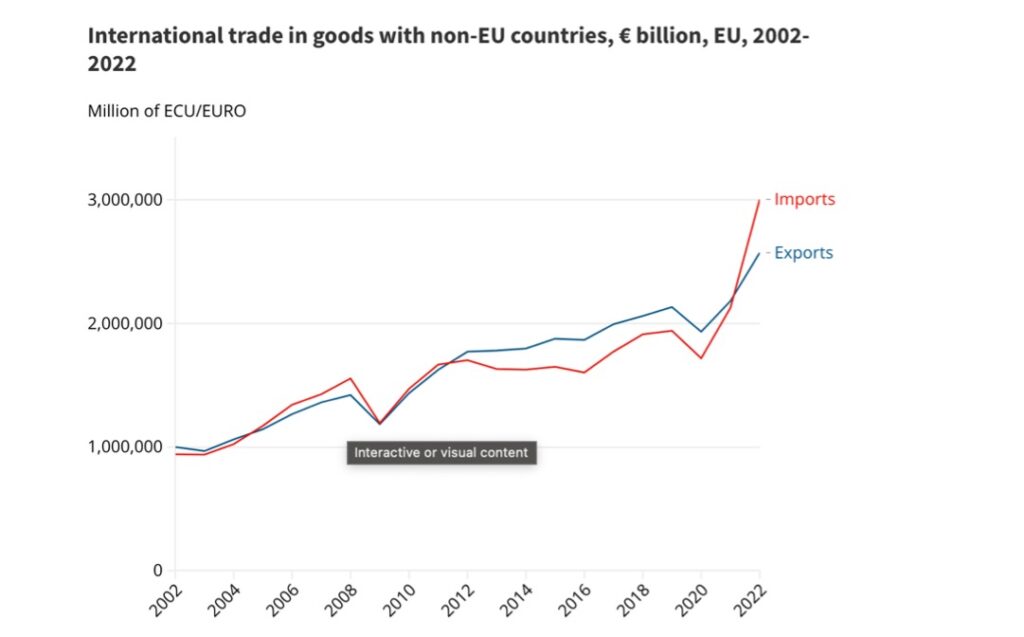
Increasing cost of living: Nearly half (47.1%) of the average household expenditure in the EU in January 2023 was spent on the three costs that had experienced the largest increases: housing, transit, and food costs. According to data that Eurostat released, the outcome is a worsening cost of living issue. 95.3 million people, or 21.6% of the EU’s population, were at danger of poverty or social exclusion in 2016. Bulgaria (32.2%) and Romania (34.4%) had the highest percentages.
Trade deficits: The EU saw its first trade deficit in ten years in 2022. The value of products imported into the EU from non-EU nations was €430 billion greater than the value of goods exported from the EU. This comes after a decade of positive goods trade between 2012 and 2021. In 2022, the US accounted for 19.8% of the total export value from the EU, while the UK came in second with 12.8%. The value of exports from the EU to Russia fell by 38.1% between 2021 and 2022 as the conflict in Ukraine halted trade.
Measures And Impacts
The energy crisis brought on by Russia’s conflict in Ukraine continues to have a significant impact on European economies, corporations, and consumers. The high cost of energy in Europe has contributed to an 8.5% annual inflation rate in the euro region. The cost of living rose by 10.9% in Italy.
Not just customers are harmed by these painful price increases. They also affect businesses with high energy needs. The cost of energy was three times greater in 2022 than in 2021. These expenses have been partially mitigated by investments in solar panels and biogas, but some businesses are still highly burdened by them.
The European Commission has introduced measures intended to lessen the burden on EU consumers and businesses who are struggling to make ends meet as a result of the volatile global energy market and rising costs.
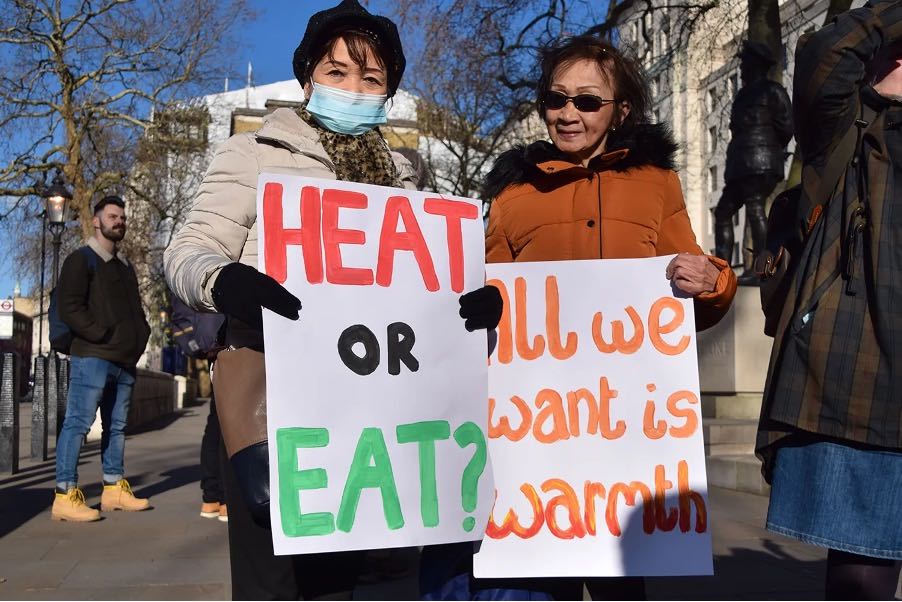
The State Aid Temporary Crisis Framework was adopted by the European Commission in March 2022 to support the EU’s economy following Russia’s invasion of Ukraine. It enables Member States to provide constrained amounts of aid to businesses harmed by the conflict or the sanctions, provide liquidity support for enterprises, and make up for the high energy costs that businesses must pay.
The need to reconsider energy supply, energy consumption, and energy output has been brought to light by the conflict in Ukraine. In recent months, energy costs have fallen significantly across Europe. Families will therefore experience cheaper energy costs in the upcoming weeks and months. However, those energy costs will still be two to three times greater than they were previously.
The electrical market in Europe has flaws that have been exposed by the energy crisis. In order to modernize the market and better protect consumers from price shocks, the EU started a consultation in January. However, this alone won’t be sufficient.
The only sustainable option for Europe to emerge from this crisis in the next months is to correct this imbalance. This can be accomplished by reducing demand and maximizing the supply of alternatives. It entails creating gasification and floating storage units, as Germany is doing. It entails negotiating fresh gas contracts with LNG providers, promoting solar energy to replace gas in the production of electricity, and encouraging the installation of heat pumps in homes to replace the gas boiler. These are the only structural responses to Europe’s energy issue.
Written by – Tanisha Lakhani
Edited by – Yashvi Vasani

